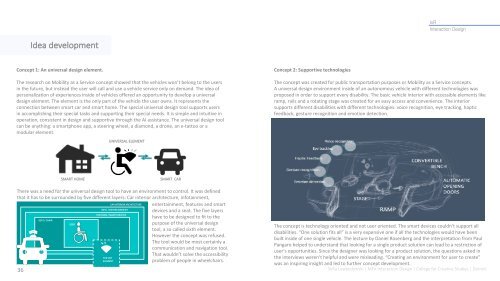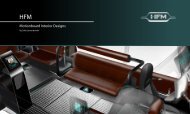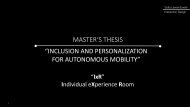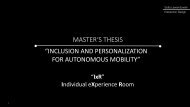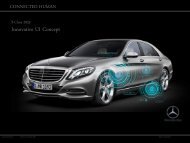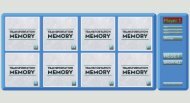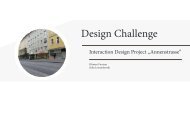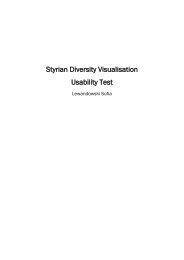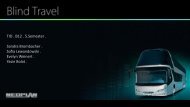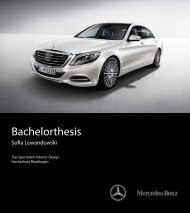Documentation_IxR_Lewandowski
You also want an ePaper? Increase the reach of your titles
YUMPU automatically turns print PDFs into web optimized ePapers that Google loves.
<strong>IxR</strong><br />
Interaction Design<br />
Idea development<br />
Concept 1: An universal design element.<br />
The research on Mobility as a Service concept showed that the vehicles won’t belong to the users<br />
in the future, but instead the user will call and use a vehicle service only on demand. The idea of<br />
personalization of experiences inside of vehicles offered an opportunity to develop a universal<br />
design element. The element is the only part of the vehicle the user owns. It represents the<br />
connection between smart car and smart home. The special universal design tool supports users<br />
in accomplishing their special tasks and supporting their special needs. It is simple and intuitive in<br />
operation, consistent in design and supportive through the AI assistance. The universal design tool<br />
can be anything: a smartphone app, a steering wheel, a diamond, a drone, an e-tattoo or a<br />
modular element.<br />
Concept 2: Supportive technologies<br />
The concept was created for public transportation purposes or Mobility as a Service concepts.<br />
A universal design environment inside of an autonomous vehicle with different technologies was<br />
proposed in order to support every disability. The basic vehicle interior with accessible elements like<br />
ramp, rails and a rotating stage was created for an easy access and convenience. The interior<br />
supports different disabilities with different technologies: voice recognition, eye tracking, haptic<br />
feedback, gesture recognition and emotion detection.<br />
UNIVERSAL ELEMENT<br />
SMART HOME<br />
SMART CAR<br />
There was a need for the universal design tool to have an environment to control. It was defined<br />
that it has to be surrounded by five different layers: Car interior architecture, infotainment,<br />
CAR INTERIOR ARCHITECTURE entertainment, features and smart<br />
INFO- / ENTERTAINMENT<br />
devices and a seat. The five layers<br />
FEATURES / SMART DEVICES<br />
Co<br />
have to be designed to fit to the<br />
SEAT / CHAIR Co<br />
nc<br />
nc<br />
USER<br />
eppurpose of the universal design<br />
ep<br />
t 2tool, a so called sixth element.<br />
t 1<br />
However the concept was refused.<br />
The tool would be most certainly a<br />
communication and navigation tool.<br />
That wouldn’t solve the accessibility<br />
THE SIXT<br />
ELEMENT<br />
problem of people in wheelchairs.<br />
36<br />
The concept is technology oriented and not user oriented. The smart devices couldn’t support all<br />
disabilities. “One solution fits all” is a very expensive one if all the technologies would have been<br />
built inside of one single vehicle. The lecture by Daniel Rosenberg and the interpretation from Paul<br />
Pangaro helped to understand that looking for a single product solution can lead to a restriction of<br />
user’s opportunities. Since the designer was looking for a product solution, the questions asked in<br />
the interviews weren’t helpful and were misleading. “Creating an environment for user to create”<br />
was an inspiring insight and led to further concept development.<br />
Sofia <strong>Lewandowski</strong> | MFA Interaction Design | College for Creative Studies | Detroit


